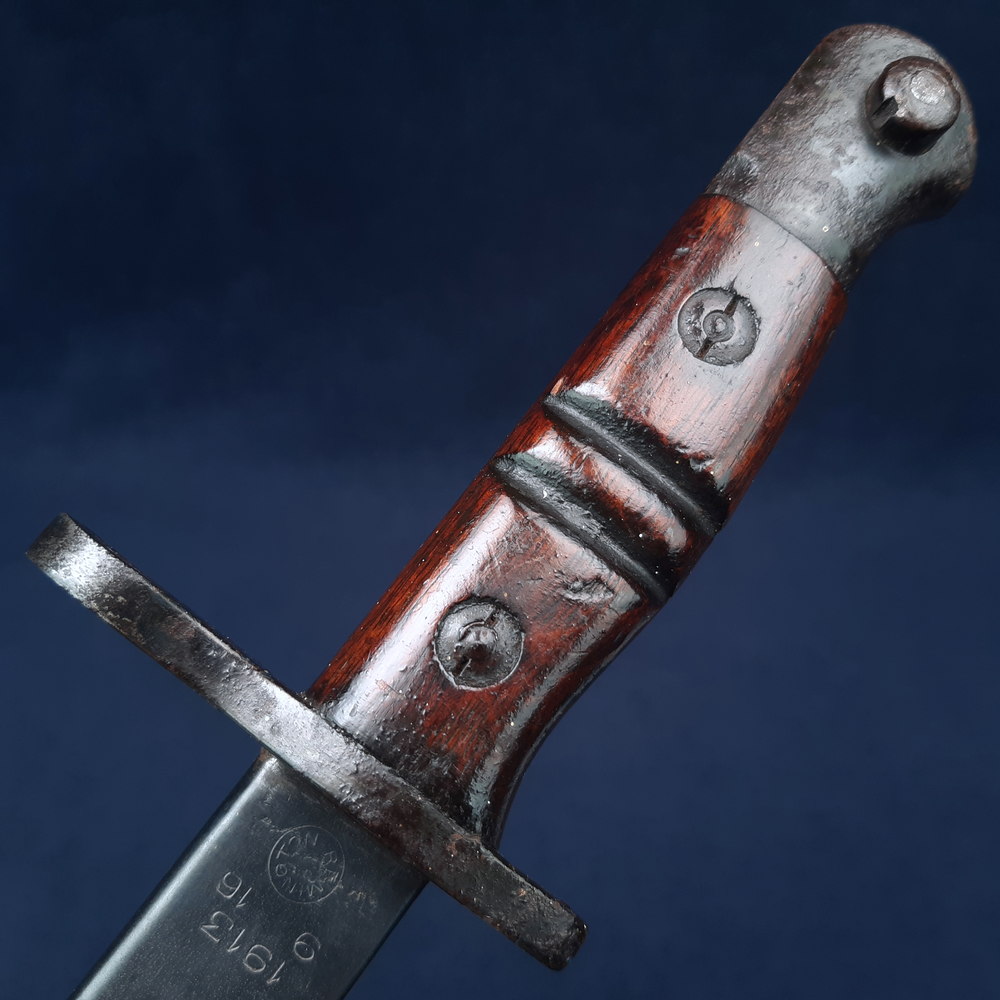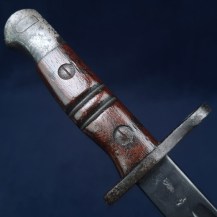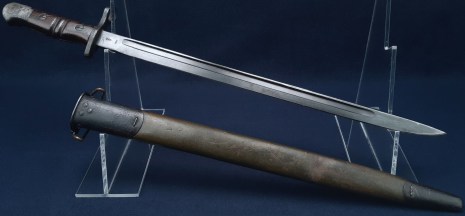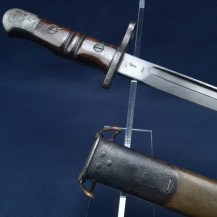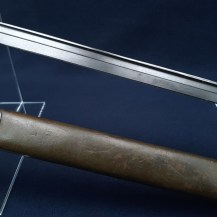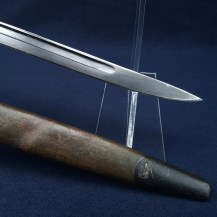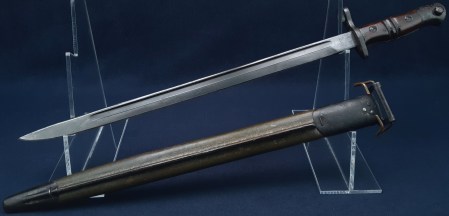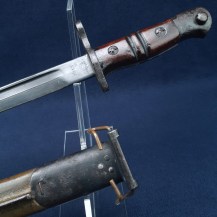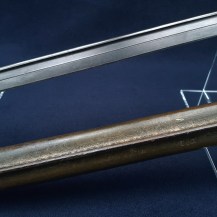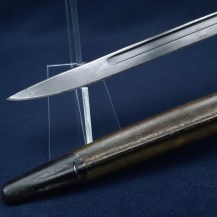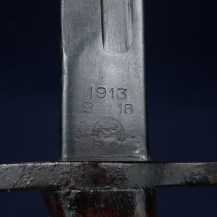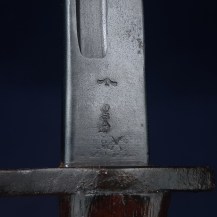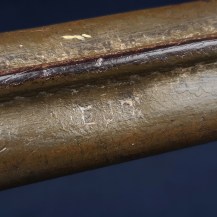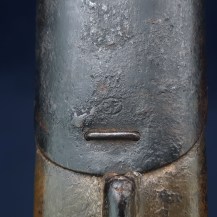British WW1 1913 Pattern Bayonet, Dated 9/1916 by Remington
Unfullered spear pointed blade, wood scale grips with two brass rivets. Steel pommel and hilt with short quillon and muzzle ring. Brown leather scabbard with steel throat and chape. Blade 11.97 inches in length (304mm), the bayonet 16.69 inches overall (424mm).
This bayonet is a little unusual in that it is completely unmarked with no reference to its maker or any government service. Its muzzle ring has been bushed to around 14.7mm in diameter (the standard for the 1888 Pattern being 16.5mm). Both the bayonet and its scabbard seem to be subtly non-standard, a good but not 100% correct rendition of the Pattern.
Putting these factors together this might be the ‘India Pattern’ version of the 1888 bayonet - approved in 1904, this version’s modification ‘consisted merely of bushing the muzzle ring to suit the smaller diameter of the Lee-Enfield cavalry carbine barrel, which would make the MRD of the bayonet about 14.7mm’ (see British & Commonwealth Bayonets by Skennerton & Richardson p342, or British Commonwealth Bayonets and Fighting Knives by Skennerton & Labudda p370).
If the bayonet was actually produced in India that might explain its non-standard construction. As shown in Skennerton some rough copies of the 1888 Pattern were made for State Forces in India which were distinctly cruder than the official version – this example is better-made and closer in form to the Pattern than those.
Alternatively this might be one of the ‘trade’ or ‘commercial’ 1888 bayonets, which were not made as part of any government contract and were instead sold to Volunteer units or private buyers by firms including Wilkinson and Greener. These generally bear no government markings, although not even bearing a maker’s mark is unusual. Some trade bayonets were even assembled from surplus parts, bought up after the end of the official production by Greener. Spare-parts bayonets can show unusual features including having clearance holes on both the pommel and the grips (Mk I grips having been paired with a Mk II or III pommel) or, like this example, no clearance holes at all.
The blade is bright with only some tiny spots of very light patination. It is unsharpened with no edge damage. The hilt, exposed tang and pommel have a dark even patina. The wood grips have only a couple of tiny shallow dents and little handling wear, their finish generally lustrous with visible grain. The throat and chape pieces of the scabbard are deeply blued with only small spots of wear to the finish. The chape piece of the scabbard is essentially a tube, open at the bottom – this may have been deliberate to allow drainage or there may have been a small end plate that has been lost. The leather of the scabbard has some light creasing from bending and a few small spots of rubbing, but is generally good and flexible, with its stitching all intact.

